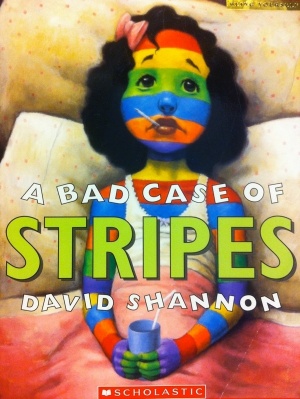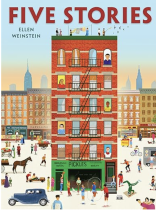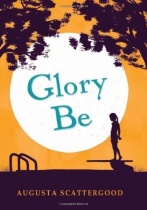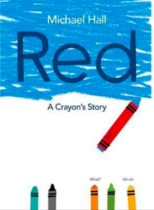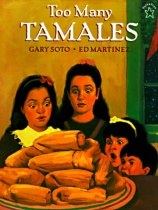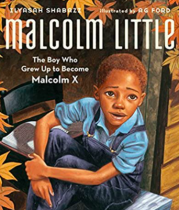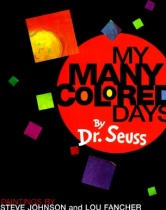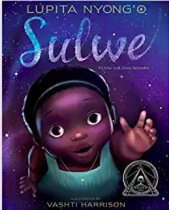Evaluation
Although I had always heard about this book and its unending humor, I never actually got the chance to read it. I have to say, the plot is quite humorous. What is even more humorous is the fact that Camille refuses to eat her Lima beans because it makes her "different" than the others. Yet, it is this very act of not eating her Lima beans which causes her to develop a very horrible case of stripes. The moral of this story is carefully and creatively hidden within the humor and the laughter of this piece. Although you may not actually turn different colors if you pretend to be someone you aren't, it is much easier just to be yourself. I think Shannon's idea of "changing colors" may have come from the phrase "it is important to remain comfortable in your own skin." Although Camille realized that liking Lima beans was a bit odd, her viewpoints were put into perspective after her skin turned red, white and blue, etc. Her love of Lima beans wasn't nearly as ridiculous as her face changing colors. As an elementary teacher, it is important for all students to be aware of each other's differences and to respect each other's differences within the classroom. You may have students with different cultural backgrounds, students with different socioeconomic statuses and students with Exceptionalities. Yet, we tend to learn the most from those aren't afraid to be themselves. After all, this is what life is all about.
For students in Kindergarten and First Grade you may have them illustrate a picture of themselves. What do they look like when they are "being themselves?" You could also have the students participate in a creative writing activity where they choose one thing about themselves that other students may find "unique" or "different." For example, perhaps Lucy really likes playing the accordion with her dad. This would be an excellent "get to know me" activity for the beginning of the year. The teacher may then decide to create a classroom book out of these journal prompts and illustrations. Alongside these creative projects, you may decide to talk about the "no bullying policy" and the importance of treating others they way you want to be treated. Another journal prompt or discussion could include asking the students about a time they saw someone being bullied or they were being bullied themselves. How did this make them feel? What did they do to stop the bullying? The teacher may also create social stories for the students to act out during the school year to model the steps the students should take when they see someone being bullied or they are being bullied themselves. Dramatic activities allow students to really explore both sides of the situation from multiple perspectives.
